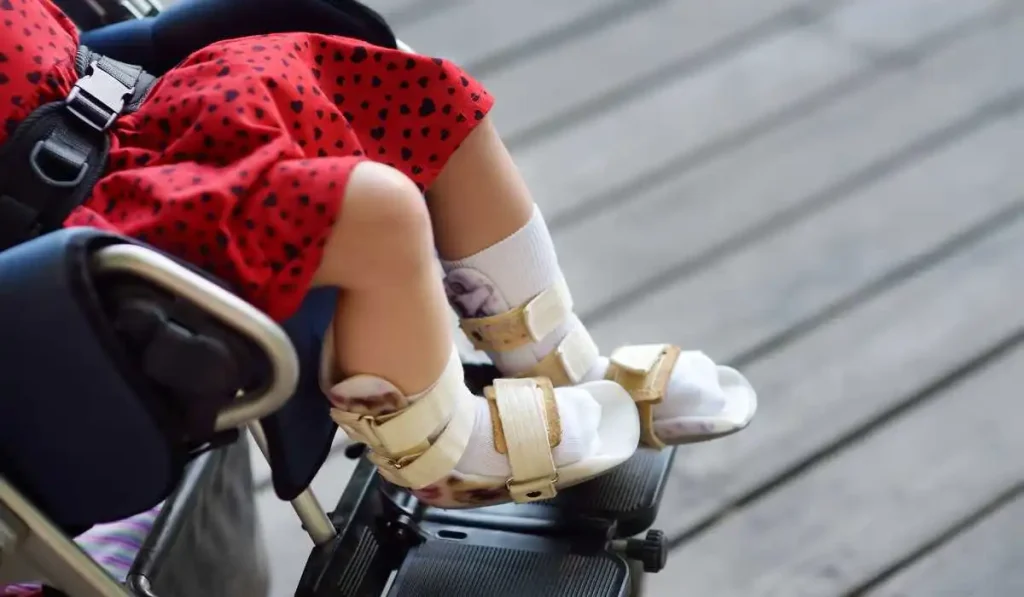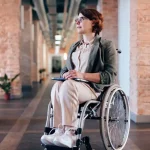So, you’ve found yourself in a bit of a bind with a broken leg, and the last thing you want is to compromise on comfort and mobility. Fortunately, there are wheelchairs designed specifically to cater to your needs, providing the support and ease of movement necessary for a smooth recovery.
But with so many options available, how do you know which one is the right fit for you? Well, we’ve done the legwork (pun intended) and narrowed it down to the top three wheelchairs that guarantee both comfort and mobility.
Stick around to discover the best options for your broken leg recovery and gain the freedom to move with confidence.
Key Takeaways
- The weight capacity and seat size of the wheelchair should be considered to ensure proper support and comfort during broken leg recovery.
- Maneuverability on different surfaces, such as carpet or uneven terrain, is an important factor to evaluate when choosing a wheelchair.
- Portability and storage features are important for convenience and ease of transportation.
- The adjustability of leg rests is crucial for providing comfort and promoting proper leg positioning during recovery.
Medline Foldable K4 Wheelchair
What we like
- Lightweight and maneuverable design
- Comfortable seat pad and backrest
- Adjustable armrests and removable leg rests
What we don’t like
- Not suitable for rough or unpaved surfaces
The Medline Foldable K4 Wheelchair is the ideal choice for individuals recovering from leg or knee surgery or for seniors and adults in need of everyday aid due to its lightweight, maneuverable design and comfortable features.
This wheelchair boasts a foldable, lightweight welded-steel frame, making it easy to maneuver through doorways and around corners.
The 20′ x 16′ seat pad and backrest provide comfort, and the height-adjustable seat caters to individual needs. With sturdy wheels and smooth-rolling, flat-free tires, it can support up to 300 lbs.
User highlight its ease of use on various surfaces, adjustable armrests, and removable leg rests. Recommended for both indoor and outdoor use, this wheelchair is a great choice for those on the road to recovery or in need of reliable everyday aid.
Best For: Patients recovering from leg or knee surgery or seniors & adults in need of everyday aid.
ProBasics Standard Wheelchair
What we like
- Lightweight and easy to fold
- Smooth rolling and easy maneuverability
- Options for tailored individual needs
What we don’t like
- Heavy and may pull to one side
If you’re seeking a durable, easy-to-maneuver wheelchair for broken leg recovery, the ProBasics Standard Wheelchair is an excellent choice.
This wheelchair features a slide tube steel frame design with a black powder coat finish, providing both durability and a sleek appearance.
The easy-to-clean vinyl upholstery and flip-back, padded, upholstered removable armrests ensure comfort during use. With a weight capacity of 250 pounds and options for swing-away footrests or elevating leg rests, this wheelchair can be tailored to individual needs.
Users have praised its lightweight, easy-to-fold design and smooth rolling, making it suitable for quick movements in various environments. However, some have noted that it’s heavy and may pull to one side, while a few have experienced quality issues with the leg rests.
Best For: Individuals seeking a durable and maneuverable wheelchair for broken leg recovery.
Drive Medical Blue Streak Wheelchair
What we like
- Lightweight and foldable for easy transport and storage
- Easy transfer with flip back desk arms and swing-away leg rests
- Smooth and stable ride on various surfaces
What we don’t like
- Additional cushion may be needed for extended periods of sitting
For anyone recovering from a broken leg or foot injury, the Drive Medical Blue Streak Wheelchair offers a lightweight and maneuverable solution for mobility.
Weighing only 41 pounds, this folding wheelchair is easy to transport and store. Its durable design includes push-to-lock tires and detachable desk arms for convenience.
The 20-inch seat with elevated leg rests provides comfort, while the solid yet lightweight wheels ensure a smooth ride. Users appreciate the easy transfer facilitated by the flip back desk arms. The wheelchair’s compact size when folded, measuring just 12.5 inches in width, allows it to fit in car trunks.
Overall, this wheelchair is versatile, affordable, and suitable for short-term use and light mobility needs, making it a practical choice for individuals recovering from leg or foot injuries.
Best For: Individuals recovering from broken legs or foot injuries who require a lightweight and maneuverable wheelchair for short-term mobility needs.
Factors to Consider When Choosing Wheelchairs for a Broken Leg
When choosing a wheelchair for a broken leg, it’s important to consider the weight capacity, seat size, and comfort to ensure proper support.
You’ll also want to assess the maneuverability on different surfaces and the portability and storage options, depending on your lifestyle and mobility needs.
Additionally, the adjustability of leg rests is crucial for finding the right fit for your specific injury and recovery process.
Wheelchair Weight Capacity
Consider the weight capacity of the wheelchair carefully to ensure it comfortably accommodates your current weight and any potential fluctuations. Different wheelchairs have varying weight capacities, so matching the capacity with your weight is crucial for safety and proper functionality.
It’s advisable to choose a wheelchair with a weight capacity that provides a margin above your current weight to accommodate any additional items or accessories being carried. This ensures that the wheelchair can support you effectively without strain.
Selecting a wheelchair with an appropriate weight capacity is essential for your comfort, safety, and overall satisfaction with the wheelchair. By considering this factor, you can ensure that the wheelchair meets your specific needs during the recovery period for your broken leg.
Seat Size and Comfort
Ensure the seat size and comfort provide a proper fit and support for the user when choosing a wheelchair for a broken leg recovery.
Look for a wheelchair with a seat pad and backrest that offer comfort during use. The seat size should allow for proper support and stability, and consider adjustable features such as height and depth to accommodate different body types. Additional cushioning options are crucial, especially for extended periods of sitting.
A well-fitted and comfortable seat can help prevent discomfort and pressure sores, promoting better recovery and mobility. When trying out wheelchairs, pay attention to how the seat feels, ensuring it provides the necessary support and comfort for the user’s specific needs during the broken leg recovery period.
Maneuverability on Surfaces
For a smooth transition from focusing on seat size and comfort to discussing maneuverability on surfaces when choosing wheelchairs for a broken leg, ensure the wheelchair is easy to maneuver through doorways and around corners. Consider the ability of the wheelchair to roll smoothly on different surfaces such as carpet, tile, and pavement.
Look for wheelchairs with solid yet lightweight wheels for stable and smooth rides. It’s important to evaluate the ease of movement and stability of the wheelchair on different surfaces, as well as its practicality for transport. Also, consider the wheelchair’s ability to fit in a car trunk for convenient mobility.
Portability and Storage
When selecting a wheelchair for a broken leg, prioritize assessing its weight and folding mechanism to ensure easy transport and storage. Look for compact dimensions when folded and the ability to fit in a car trunk for increased portability. Evaluate the wheelchair’s folded width and height to ensure it can be conveniently stored in various spaces.
Additionally, consider user experiences pertaining to the wheelchair’s portability, including ease of movement through doorways and overall convenience. The wheelchair’s maneuverability on different surfaces, such as carpet, should also be assessed to ensure ease of use in different environments.
Prioritizing portability and storage features will enhance your mobility and overall experience during the recovery period.
Adjustability of Leg Rests
Consider the adjustability of leg rests as a key factor when choosing a wheelchair for recovery from a broken leg. The ability to customize the leg rests to fit your comfort and support needs is crucial.
Look for wheelchairs with adjustable leg rests that can be moved to the side or elevated to accommodate different positions and ease of movement. User feedback emphasizes the importance of easy maneuverability and leg rest adjustment, highlighting the positive impact on overall comfort.
Additionally, the availability of swing-away leg rests or elevating leg rests provides configuration options to suit individual requirements. Some wheelchair models also offer the flexibility of heel loops or pneumatic pistons for footrests, ensuring adaptable support for your legs throughout the recovery process.
Wheelchair Durability
When choosing a wheelchair for recovery from a broken leg, focus on the durability of the frame, wheels, and components to ensure long-lasting support and comfort. Consider the material and construction of the wheelchair frame to ensure it’s sturdy and can withstand regular use.
Look for sturdy wheels with smooth-rolling, flat-free tires to ensure durability and ease of maneuverability. Check for weight capacity and the weight of the wheelchair, as a higher weight capacity and a lighter weight can indicate durability and ease of use.
Additionally, consider the durability of the leg rests and armrests, as they’re frequently used components that should withstand wear and tear over time. It’s also valuable to seek user feedback on the overall build quality and sturdiness of the wheelchair, especially if it will be used frequently or for extended periods.
Suitability for Short-Term Use
Looking for a wheelchair for short-term use due to a broken leg?
When considering wheelchairs for short-term recovery, it’s essential to prioritize features that match your temporary needs.
Focus on finding a wheelchair with a weight capacity and durability suitable for short-term use. Look for portability and easy storage, especially if you’ll only need the wheelchair for a brief period.
Additionally, prioritize comfort and adjustability for the limited duration of use. Consider how you’ll be using the wheelchair during this short-term period and choose a model that suits those specific activities.
Frequently Asked Questions
Can These Wheelchairs Be Easily Maneuvered in Tight Spaces Like Narrow Hallways and Doorways?
In tight spaces like narrow hallways and doorways, these wheelchairs can be easily maneuvered. You’ll find that their compact design and swivel wheels make getting around confined areas a breeze, ensuring convenience and accessibility.
Are These Wheelchairs Suitable for Outdoor Use, Such as Navigating Over Uneven Terrain or Grass?
Yes, these wheelchairs are suitable for outdoor use. They are designed with durable wheels and sturdy frames to navigate over uneven terrain or grass. You’ll have the freedom to move comfortably outdoors.
What Is the Weight Capacity of Each Wheelchair and How Does It Compare to the Average Weight of a Person With a Broken Leg?
The weight capacity of each wheelchair varies, but it typically accommodates more than the average weight of a person with a broken leg. It’s important to match the wheelchair’s capacity with your weight for safe and comfortable mobility.
Are the Legrests Adjustable for Different Leg Lengths and Comfort Levels?
Are the legrests adjustable for different leg lengths and comfort levels? Yes, they are. You can easily customize the legrests to fit your specific needs and ensure maximum comfort while using the wheelchair for your broken leg recovery.
Do These Wheelchairs Come With Any Warranty or Guarantee for Durability and Performance?
Yes, these wheelchairs come with a warranty for durability and performance. You can feel confident in your purchase knowing that it’s backed by a guarantee, giving you peace of mind as you focus on recovery.





